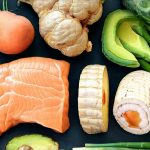Many people experience digestive discomfort after consuming protein – bloating, gas, heartburn, even nausea. This isn’t necessarily a sign of a protein intolerance so much as an indication that the type of protein source, its preparation method, or the individual’s digestion capabilities aren’t aligning optimally. Often, it comes down to how easily our bodies can break down and absorb different proteins. Highly processed or fatty protein sources are notorious for triggering these issues, while leaner options and careful cooking techniques often lead to a much more comfortable experience. Understanding which protein sources tend to be gentler on the digestive system is key for anyone seeking to increase their protein intake without sacrificing comfort.
The good news is that building a high-protein diet doesn’t have to mean suffering through discomfort! There’s an enormous variety of protein options available, and many are significantly easier to digest than others. This article will explore several excellent choices, focusing on those known for being kinder to sensitive stomachs, along with tips for preparation and consumption to minimize digestive upset. We’ll also look at factors contributing to protein-related discomfort and how to identify potential triggers in your own diet. The goal isn’t to eliminate any foods entirely, but rather to make informed choices that support both nutritional needs and digestive well-being. Considering how to plan balanced meals can further ease digestion.
Gentle Protein Sources: Prioritizing Digestibility
One of the biggest factors determining a protein source’s digestibility is its inherent complexity and the amount of accompanying fat. Highly processed meats, for example, contain not only protein but also additives, preservatives, and often substantial amounts of saturated fat, all of which can slow down digestion. Leaner proteins are generally easier to process. White fish, poultry (skinless), and plant-based options like tofu and lentils tend to be much more readily absorbed by the body. Minimizing added fats during cooking also plays a significant role – grilling, baking, or steaming are preferable to frying. If you suspect certain foods cause issues, practical methods can help identify them.
The speed at which protein is digested impacts how we feel. Rapidly digesting proteins, like whey protein isolate (discussed later), can sometimes cause issues for those with sensitivities because they overwhelm the digestive system quickly. Conversely, slower-digesting proteins provide a more sustained release of amino acids and are less likely to trigger abrupt changes in digestion. This doesn’t mean fast-digesting proteins are bad – it just means understanding their impact is crucial when tailoring your diet to individual needs. Choosing protein sources with naturally occurring digestive enzymes or pairing them with enzyme-rich foods can further enhance digestibility. Understanding meal combinations may also help you optimize digestion.
Finally, the form of protein matters. Whole food sources are generally preferred over highly processed protein powders or supplements, as they provide additional nutrients and fiber which aid in digestion. However, when supplements are used, choosing high-quality brands with minimal additives is essential. Paying attention to ingredient lists and opting for options with fewer artificial sweeteners, fillers, and preservatives can make a world of difference.
White Fish: A Top Choice For Sensitive Systems
White fish – cod, haddock, halibut, flounder – consistently rank among the easiest proteins to digest. This is due to their low fat content and simple protein structure. Unlike fatty fish like salmon (which are incredibly nutritious but potentially harder on some stomachs), white fish doesn’t require as much digestive effort.
- It’s lean meaning less fat to process.
- It contains minimal connective tissue, making it easier for enzymes to break down the protein strands.
- White fish is a great source of essential amino acids without overwhelming the system.
Preparation methods are key here too. Steaming or baking white fish with minimal added oil and seasoning is ideal. Avoid frying or coating in heavy sauces, as these additions can negate its digestibility benefits. Incorporating herbs like ginger or turmeric during cooking may also help soothe digestion further. Consider pairing it with easily digestible sides such as steamed vegetables or quinoa to create a complete and comfortable meal.
Poultry (Skinless): A Versatile Option
Skinless poultry – chicken breast and turkey breast specifically – are excellent alternatives to red meat, offering lean protein without the heavy fat content. Removing the skin dramatically reduces the overall fat intake, making it significantly easier on the digestive system.
- The low-fat nature of skinless poultry allows for quicker digestion.
- It’s a highly versatile protein source that can be incorporated into numerous dishes.
- Poultry provides essential nutrients like niacin and vitamin B6 alongside its protein content.
However, even skinless poultry can cause issues if improperly prepared. Overcooking can make it dry and difficult to digest. Brining the poultry before cooking or using marinades can help retain moisture and tenderness. Gentle cooking methods such as poaching, baking, or grilling are preferred over frying. Avoid heavily spiced marinades that may irritate sensitive stomachs. Including prebiotic-rich foods alongside your meals can support gut health.
Plant-Based Proteins: Lentils & Tofu
Plant-based proteins offer a unique advantage for digestive health due to their inherent fiber content. Fiber aids in digestion and promotes regularity, counteracting some of the potential discomfort associated with protein intake.
Lentils are an exceptionally digestible plant protein source, especially red lentils which tend to be softer and easier to break down than green or brown varieties. They’re also rich in prebiotics, which nourish beneficial gut bacteria. Tofu, made from soybeans, is another excellent choice. Opt for firm or extra-firm tofu as these require less processing during digestion compared to silken tofu.
- Soaking lentils before cooking can further reduce their gas-producing potential.
- Choosing organic and non-GMO tofu ensures a cleaner product with fewer additives.
- Pairing plant-based proteins with easily digestible carbohydrates like sweet potatoes or brown rice creates a balanced meal that supports optimal digestion. If you struggle with discomfort, consider high-fiber foods to support digestive health.
The key takeaway is to prioritize whole, unprocessed protein sources whenever possible. This minimizes the burden on your digestive system and allows you to reap the nutritional benefits without unnecessary discomfort. Experimenting with different options and paying attention to how your body responds is crucial for finding what works best for you. If histamine intolerance might be a factor, explore the link between histamine and digestive discomfort.


















